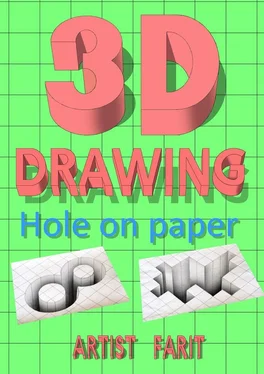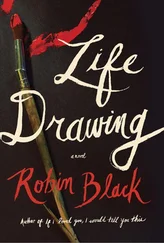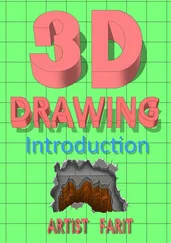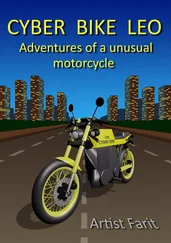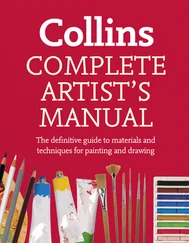3D drawing
Hole on paper
Artist Farit
Дизайнер обложки Farit Artist
Иллюстратор Farit Artist
Фотограф Farit Artist
Переводчик Google
© Artist Farit, 2021
© Farit Artist, дизайн обложки, 2021
© Farit Artist, иллюстрации, 2021
© Farit Artist, фотографии, 2021
© Google, перевод, 2021
ISBN 978-5-4498-9710-7
Создано в интеллектуальной издательской системе Ridero
Artist Farit
3D DRAWING
Detailed course 3D drawing
Volume Two.
Hole on paper.
Table of contents
Introduction.
3D drawing on paper.
Conclusion
.

The story of one of my 3D drawings.
This drawing lasted only one day on the stairs of the shopping center. One woman, seeing the drawing, was frightened, but when she looked closely, she laughed. Later, one of the visitors was more seriously afraid, and complained to the director of the shopping center. The director said – Remove the drawing, I do not need heart attacks on the stairs of my shopping center.
ATTENTION!
You are watching the book «3D DRAWING. Hole on paper.»
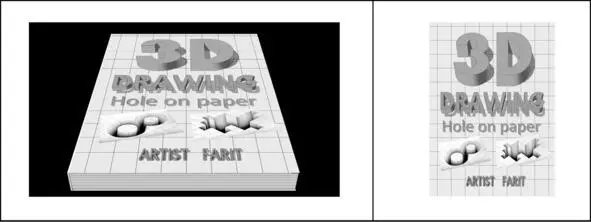
This is the cover of the book «3D DRAWING. Hole on paper. «Which you are currently viewing.
If some time ago, you bought the first version of this book, with the short title «3D DRAWING», without the addition of « Hole on paper», the cover of which is shown below.

This is the first version of the book, with the short title «3D DRAWING». no add-on «Hole on paper».
In this case, buy the book «3D DRAWING. Hole on paper.» Which you are currently viewing is not necessary. The book «3D DRAWING. Hole on paper.» contains the same lessons that are in the first book with the short title «3D DRAWING».
Keep learning. Learn more about computers, about crafts, gardening – about anything. Never leave your brain lazy. “An idle brain is the devil’s workshop.” And the name of the devil is Alzheimer.
George Carlin.
At a fairly late age, I learned to draw 3D drawings. I learned on my own, not finding instructions in books or on the Internet. I came up with a very simple and visual way to learn how to draw 3D drawings. The course teaches an understanding of how to draw a 3D drawing. Detailed explanations of the fundamentals and principles, thoughtful exercises, will help readers master the secrets of the art of 3D drawing.
The course is intended for a wide range of readers. The course will be useful to novice artists, and experienced. Errors in building the perspective of 3D drawing I have met even experienced artists. If you draw at a professional level, the course will help you deepen your perspective building skills.
The course may be of interest to teachers of geometry, drawing and drawing of secondary schools, drawing schools, colleges and higher educational institutions. 3D drawing lessons will help to make drawing, sketching and geometry lessons more interesting for teenagers, youth and students. The course will be useful for the development of spatial, geometric thinking. For a better understanding of geometry. To improve spatial vision and imagination.
My course is a good way to interest geometry, adolescents and youth. Learning to draw a 3D drawing, a good way in a fun way, explain some of the laws of geometry. An interesting intellectual occupation, which can captivate adolescents and youth.
Drawing a 3D drawing (in some cases) is much easier than painting a portrait or landscape.
3D drawing, it is more – GEOMETRY. Geometry that is not studied at school. But from this it does not cease to be geometry. Many objects can be drawn using only a ruler and a dividers. Perhaps if my course becomes quite popular, a new section will appear in school geometry – geometry 3D drawing. 3D drawing is a kind of offshoot of geometry.
The ability to draw a 3D drawing can enhance the credibility of a geometry teacher in the eyes of students.
The course may be of interest to parents of adolescents and children. Joint development of the ability to draw 3D drawings is a good activity for spending family time. Occupation useful for the development of the brain of children, adolescents and parents. To distract teenagers and children from computer games and gadgets.
The course will be useful even to parents of 6—7 year old children. The sooner you show your child what perspective and geometry are, the better. I began to draw “voluminous” (NOT 3D) drawings in kindergarten, aged 5—6 years. Then I did not understand what geometry or perspective is. The kindergarten teacher showed me one small “trick” how to make “voluminous” drawings from my flat drawings such as “side view”.
I am many years old; this lesson in kindergarten was a very long time ago. I don’t remember the details, but I well remember what effect the conversion of my “flat” drawings into “voluminous” had on me. It was like an insight. Thanks to this effect, I remember that case. Perhaps that lesson, with a little “trick”, started the process of mastering and understanding geometry in my brain. After that “lesson”, I drew “flat” objects and turned them into “voluminous” ones. For me it was one of the most interesting activities.

Reconstruction of my children’s drawings, such as “side view”.

The kindergarten teacher showed me a little “trick”. She drew to my “flat” drawings, segments of the same length, and in one direction.
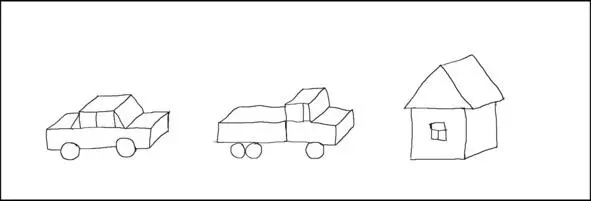
The teacher connected the ends of the painted segments. And a “miracle” happened! “Flat” cars and the house became “voluminous”.
Preschoolers should watch similar lessons. If they have a predisposition to spatial vision, it will be very useful and interesting for them. Unless they are predisposed to drawing and geometry, they will not suffer from these lessons.
Perhaps if the kindergarten teacher did not show me this «trick», I would not be able, at an older age, to independently master the 3D-drawing and write this guide on the basics of 3D-graphics.
The brain in childhood is particularly tuned to learning. The first, main and main goal of the children’s brain is learning. Learning, everything that will help to survive in the race for survival, in conditions of natural selection. Therefore, children can quickly learn a second, non-native language. Learning a second language for adults is very difficult.
Читать дальше
